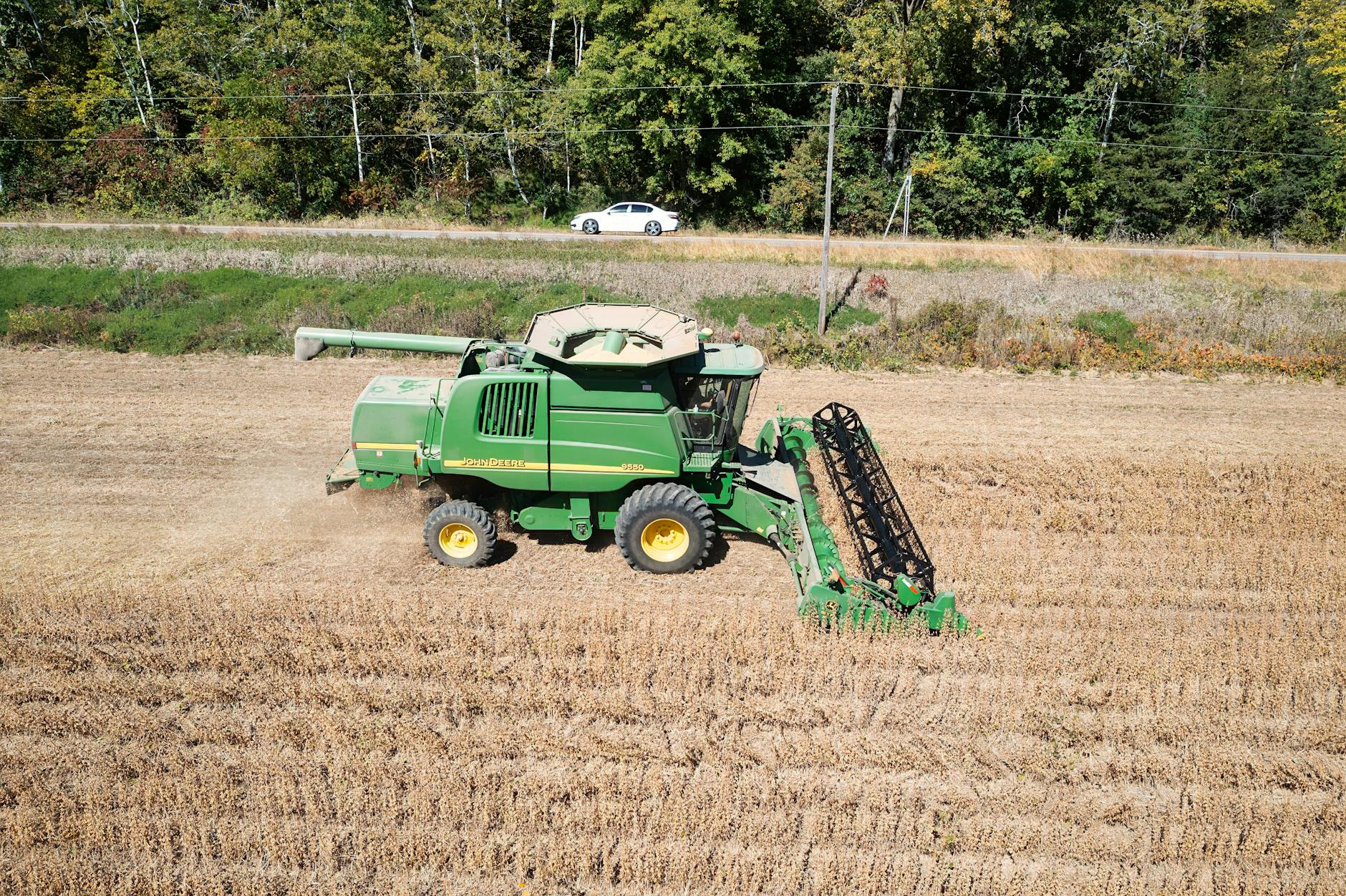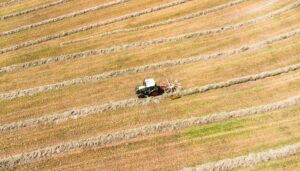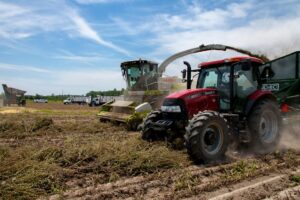The tractor is one of the most important inventions in agricultural history, revolutionizing the way farmers plow, plant, and harvest crops. But when exactly were tractors first used in farming, and how did they evolve from steam-powered giants to today’s high-tech, GPS-equipped machines?
In this article, we will explore the history of tractors, their first use in farming, and how they transformed agriculture into the efficient industry it is today.
When Were Tractors First Used in Farming?
The first tractors were used in farming during the late 19th century, but they looked nothing like the modern machines we see today. These early models were powered by steam engines and were incredibly large and heavy.
Key Milestones in Early Tractor Use:
- 1850s – Steam-powered tractors introduced
- 1892 – The first gasoline-powered tractor invented
- 1900s – Tractors begin replacing horses and oxen
- 1920s – Mass production makes tractors widely available
Now, let’s take a closer look at how tractors evolved from their earliest forms.
The First Tractors: The Age of Steam (1850s – 1890s)
Before tractors, farmers relied on horses, mules, and oxen to pull plows and carts. However, in the mid-19th century, steam-powered machines began to change agriculture.
The First Steam-Powered Tractors
- The first steam traction engines appeared in the 1850s and were used for threshing grain and plowing fields.
- These machines were massive, slow, and difficult to operate, requiring multiple people to manage them.
- Despite their size and cost, steam tractors reduced the time and labor needed for farming compared to animal-powered plows.
Limitations of Steam Tractors:
❌ Extremely heavy and often sank into soft soil. ❌ Required large amounts of fuel (wood or coal). ❌ Needed frequent maintenance and water refills.
Because of these challenges, steam-powered tractors never became mainstream, but they laid the groundwork for future innovations.
The First Gasoline-Powered Tractor (1892)
The true birth of the modern tractor came in 1892 when John Froelich, an American inventor from Iowa, built the first gasoline-powered tractor.
How the Froelich Tractor Changed Farming
✅ It was lighter and more maneuverable than steam-powered tractors. ✅ It didn’t require a steam boiler, making it safer and easier to use. ✅ It was more fuel-efficient than steam engines.
Although Froelich’s design was not commercially successful, it inspired other inventors to improve and mass-produce gasoline-powered tractors in the early 1900s.
The Rise of Tractors in the Early 20th Century (1900s – 1920s)
With gasoline-powered engines proving to be more practical than steam, several companies began developing tractors for farming.
Notable Tractor Innovations in the Early 1900s
# 1901 – The First Commercial Gasoline Tractor
- Charles Hart and Charles Parr built the first commercially successful gasoline tractor in the U.S.
- Their company, Hart-Parr, coined the term “tractor”, combining “traction” and “motor.”
# 1910s – Early Tractor Models Gain Popularity
- Companies like International Harvester and Case IH began producing gasoline-powered tractors.
- Tractors were mainly used for plowing and threshing, but they were still too expensive for many small farmers.
$ 1917 – The Fordson Tractor Revolution
- Henry Ford, the creator of the Ford automobile, introduced the Fordson Model F, the first mass-produced tractor.
- The Fordson was: ✅ Affordable, making tractors accessible to small farmers. ✅ Lightweight and easy to use, replacing horse-drawn plows. ✅ More efficient, reducing labor costs and increasing productivity.
By the 1920s, tractors had become a common sight on farms, replacing horses and oxen for plowing and hauling.
The Tractor Boom: Mechanizing Agriculture (1930s – 1950s)
During the Great Depression (1930s) and World War II (1940s), tractors became even more essential as the demand for efficient food production increased.
Key Advancements in Tractor Technology:
#🔹 1930s – Diesel Engines Introduced
- Diesel-powered tractors were more fuel-efficient and durable than gasoline models.
- Companies like John Deere and Massey Ferguson led the way in diesel engine development.
$🔹 1940s – Tractors Become Standard in Farming
- Wartime shortages led to the need for more efficient farming practices, increasing tractor demand.
- Governments encouraged farmers to use tractors to boost food production.
1950s – Hydraulic Systems and Power Steering
- The introduction of hydraulic lift systems made using attachments like plows and harvesters easier.
- Power steering improved maneuverability, making tractors more comfortable to operate.
By the 1950s, tractors had fully replaced animal-powered farming in most developed countries.
The Modern Era: Tractors with High-Tech Features (1960s – Today)
From the 1960s onward, tractors became more advanced, powerful, and efficient.
Technological Improvements in Modern Tractors
🔹 1960s – 1980s: ✅ Four-wheel drive (4WD) tractors introduced for more power. ✅ More specialized tractors for different types of farming (row crops, orchards, vineyards). ✅ Air-conditioned cabins for operator comfort.
🔹 1990s – 2010s: ✅ GPS and computer-controlled tractors improved precision farming. ✅ Automatic transmission and self-steering allowed for better efficiency. ✅ Reduced emissions and fuel-efficient designs helped make tractors more environmentally friendly.
🔹 Today (2020s & Beyond): ✅ Autonomous tractors can operate without a driver. ✅ Electric tractors are being developed for sustainability. ✅ Smart sensors and AI-powered farming optimize planting, irrigation, and harvesting.
How Tractors Changed Farming Forever
The introduction of tractors transformed agriculture in ways that horse-drawn plows never could.
The Biggest Impacts of Tractors on Farming:
✔️ Increased Productivity – Farmers could work larger fields in less time. ✔️ Reduced Labor Needs – Fewer workers were needed, reducing costs. ✔️ More Efficient Land Use – Tractors allowed for deeper plowing and better soil preparation. ✔️ Higher Crop Yields – Improved farming techniques led to more food production. ✔️ Greater Comfort & Safety – Modern tractors are designed for ease of use and protection for operators.
Thanks to tractors, food production has skyrocketed, helping to feed growing populations worldwide.
Conclusion: The Evolution of Tractors in Farming
So, when were tractors first used in farming? The first steam-powered tractors appeared in the 1850s, but it wasn’t until the early 1900s that gasoline and diesel tractors became widely adopted.
From John Froelich’s first gasoline tractor in 1892 to today’s self-driving, GPS-equipped machines, tractors have become one of the most essential tools in modern agriculture.
Tractors not only replaced horse-drawn plows, but they also helped revolutionize farming, making it faster, more efficient, and more sustainable.
🚜 What do you think the future of tractors will look like? Share your thoughts in the comments!



